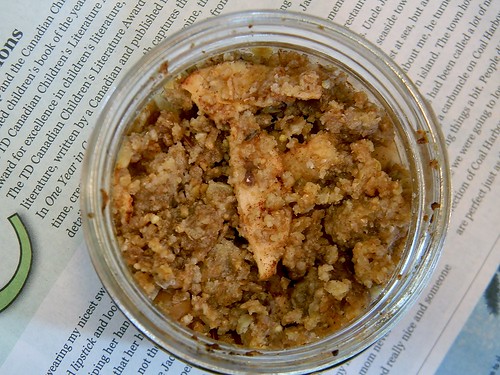Author: Jessica Harlan
Publisher: Ulysses Press (December 3,
2013) Most people can’t bear the thought of
being without their condiments. The ability to doctor up the taste of
relatively bland foods like chicken, tofu, pasta and rice, or disguise unwanted
flavours (think of children and their vegetables) opens up a world of
possibilities. With a simple change of sauce, a dish can travel from the United
States to Russia, Germany, Thailand, France and Argentina without ever leaving
the ground. However, most sauces and seasonings you find in the stores these
days are laden with ingredients you’d rather not have – from long-maligned MSG
to HFCS and a host of other acronyms and chemicals, it’s a wonder we haven’t all
turned into the pickles we enjoy on our burger. In response to our
super-processed life, a new trend has started towards homemade ingredients. Food
writer Jessica Harlan is one of
the promoters of this movement and dishes up 75 delicious, wholesome
alternatives to the grocery store in Homemade Condiments: Artisan Recipes
Using Fresh, Natural Ingredients.
Most people can’t bear the thought of
being without their condiments. The ability to doctor up the taste of
relatively bland foods like chicken, tofu, pasta and rice, or disguise unwanted
flavours (think of children and their vegetables) opens up a world of
possibilities. With a simple change of sauce, a dish can travel from the United
States to Russia, Germany, Thailand, France and Argentina without ever leaving
the ground. However, most sauces and seasonings you find in the stores these
days are laden with ingredients you’d rather not have – from long-maligned MSG
to HFCS and a host of other acronyms and chemicals, it’s a wonder we haven’t all
turned into the pickles we enjoy on our burger. In response to our
super-processed life, a new trend has started towards homemade ingredients. Food
writer Jessica Harlan is one of
the promoters of this movement and dishes up 75 delicious, wholesome
alternatives to the grocery store in Homemade Condiments: Artisan Recipes
Using Fresh, Natural Ingredients.
Homemade
Condiments is definitely not a
book dedicated to doctoring up storebought food, nor is it limited to simple
fare. The 123 pages run the gamut from Ketchups
(p. 9) to Salad Dressings (p. 77),
Sweet Sauces and Spreads (p. 103) and
even Ethnic and Specialty Ingredients (p.
89). In each chapter are a multitude of recipes – for example, eight
different ketchups (from Fresh Tomato
(p.10) to Southwestern Tomatillo (p.
19)) and six types of mustard (my favourite being the Grainy Porter (p. 37)) are all unique in their ingredients and
methods and all suit different purposes. Readers may discover a new love where
the idea never existed before, or be able to re-create an old standby remembered
from the Mom & Pop shops, before mass processing took away many of the
small producers. Like all responsible “canned food” cookbook authors, Harlan
includes an Appendix with notes on Food
Safety and Canning (p. 116), Resources
(p. 122) and Conversion Charts (p.
123). She also provides a brief but highly useful Introduction with
sections regarding Setting Up Your Pantry
(p. 3) and A Well Equipped Kitchen
(p. 5), something that should be required reading for all budding home sauce-makers.
One of the best
things about this book is that Harlan is realistic in terms of ingredients. Even
in my small-town grocery store, I was able to find all the components I needed
to make Asian Quick Pickles (p. 52) and
Hoisin Sauce (p. 97), and it only
took a quick trip to the Asian grocery one town over to find mirin (rice wine)
for the Teriyaki Sauce (p. 96) recipe.
However, if I was unable to find mirin, or found the fresh produce used
throughout Homemade Condiments lacking in terms of quality, quantity or
economy (which often happens in the winter!), Harlan offers substitutes that
may be easier to find or more cost effective while maintaining the best flavour
possible – including the use of high-quality canned tomatoes or individually
quick frozen fruit. Thanks to those options, there is no reason to put off
trying a recipe in Homemade Condiments that piques your interest.
If you’ve been
longing to find that “secret ingredient” to jazz up your weeknight meals, take
a browse through Jessica Harlan’s book Homemade Condiments:
Artisan Recipes Using Fresh, Natural Ingredients. You’ll be sure to find at
least one new fridge staple to call your own, and check off your shopping list
permanently.
Available on Amazon



